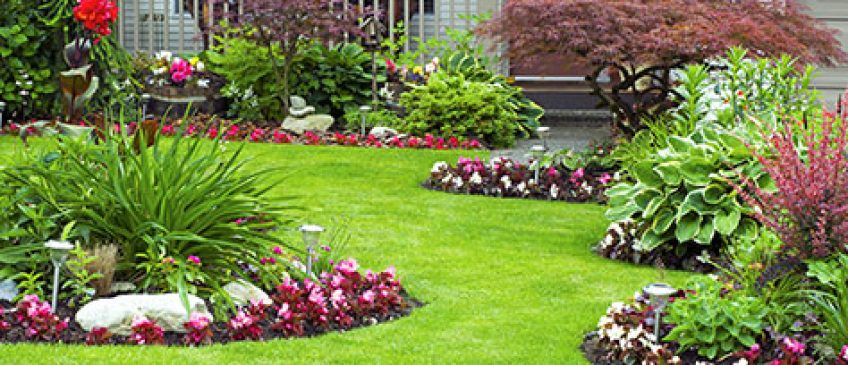Spring has sprung, and it’s time to start thinking about your landscaping, boosting curb appeal, and how to finally get a perfectly manicured lawn. It may seem daunting, but the rewards are well worth the work!
All of these things can drastically increase property value (we’re talking up to 28%!). But there’s a catch. To get the maximum return on landscaping improvements, they must be done properly. To help get you started on the right path, here are some do’s and don’ts for all of your exterior improvements this year!
Do vary your flowers
Some flowers, like hyacinths, tulips, daffodils, and lilacs are spring flowers. They’ll start blooming early in the season, but will lose their flowers when the weather gets warmer. Other flowers, like daisies, petunia, zinnias, dahlia, and more are late bloomers. Plant a mix of early and late blooming flowers so that you can enjoy a colorful garden throughout the growing season.
Also consider which plants are perennials and which are annuals. Perennial plants will come back every year, so you can count on those flowers blooming at the same time every year. You will need to plant new annuals each year, which means those blooming times will vary.
Don’t mix garden styles
While you can (and should!) be creative with your landscaping, it is important to pick a common theme and stick with it throughout the yard. Don’t make one garden eclectic and another modern. Strive to have flow throughout your yard.
On that note, don’t have too many focal points (like fountains, birdbaths, statuary, or other features). Remember: If everything is a focal point, nothing is a focal point. Pick one or two features and your garden is sure to draw attention.
Do plan your gardens before getting to work
If you’re not an artist, don’t worry! Your landscaping plans don’t have to be intricate! Just a rough sketch is all it takes to help remind you of the amount of space you have to work with and the look you’re aiming for when you go shopping for plants.
Don’t plant anything before you finish hardscaping
Just as your eyes can be bigger than your stomach when portioning food, they can also be bigger than the space you have available in your backyard when gardening. Fill up your plate with the meat and potatoes before springing for dessert. In other words, install pathways, decks, sheds, and other immovable features (also known as hardscaping) before you buy any plants so that you properly allocate space.
Do landscape with pets in mind
If you’ve got outdoor pets, there are several things you’ll need to take into consideration when landscaping. Avoid planting anything that could be poisonous to your furry companion (like Lilly of the Valley, Azalea, and Daffodil, among others). You might also want to consider planning for a fenced-in area to allow your pet to play outside on their own. Water features will need to be pet-friendly and closely monitored to make sure there are no accidents.
Don’t overlook maintenance
Lots of homeowners dream of the white picket fence protecting their perfectly manicured lawn and gardens, but it’s not always so simple to achieve.
Remember: the more you plant, the more you’ll have to take care of. Overzealous landscaping is not only a drawback to you, as a current homeowner, but may also lower your property value should you decide to sell in the future.
If you don’t have the time, energy, or stamina to maintain an intricate yard, it is a good idea to consider low-maintenance landscaping options. Succulent gardens, rock pathways, flowerbeds full of perennials rather than annuals, and a grass-free backyard are all great ways to cut down on maintenance while still reaping the benefits of an outdoors oasis.
Do properly size pathways
Garden pathways should be no smaller than 18 inches, but the standard width is 36 inches. If you want to leave enough room to walk in pairs, you’ll want no less than 48 inch-wide paths.
Don’t neglect spacing
Trees planted too close to your home will grow and expand into your foundation, putting you at risk of basement leaks and lowered property value. Small trees can be planted 10 feet away from your house, while large trees should be planted at least 30 feet away. The same care should be taken when planting shrubs near pathways. Leave at least 2 feet of room between the pathway and the shrubs for easy movement.
Good landscaping is more than a perfectly manicured lawn. Follow these tips and tricks, and you’re sure to boost your curb appeal (which will also increase your property value) in no time! What are your landscaping do’s and don’ts? Share them in the comments below!

